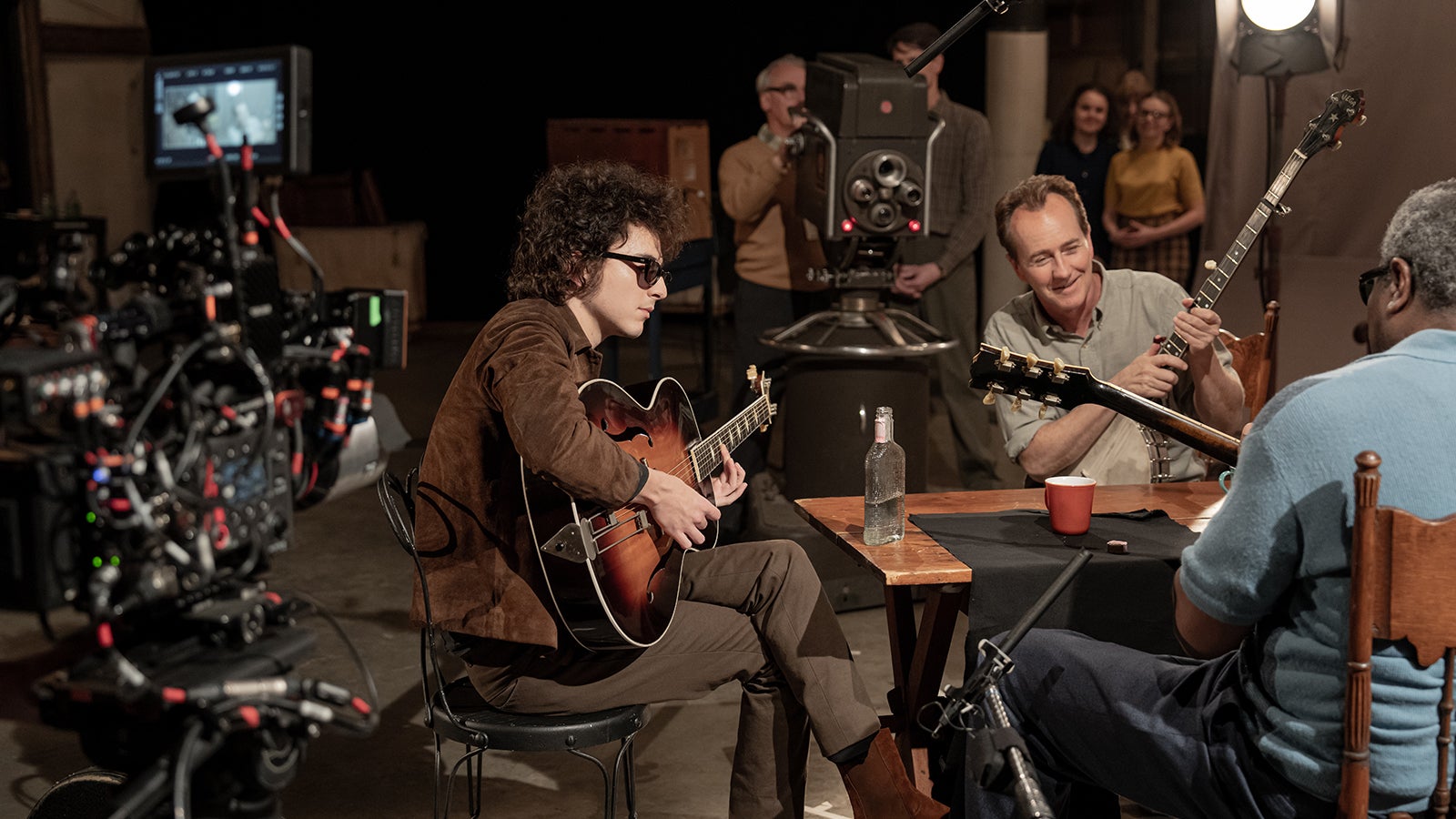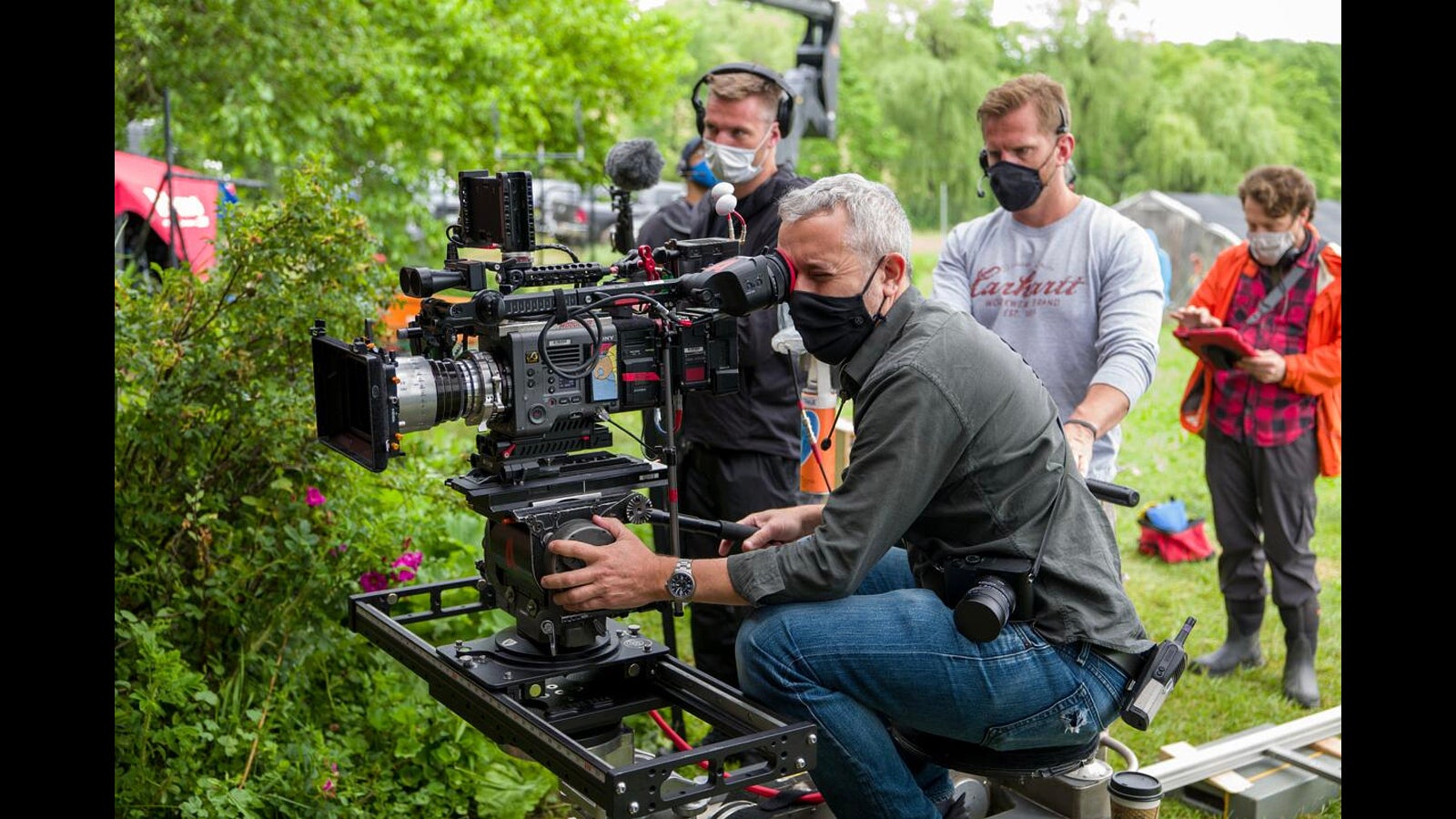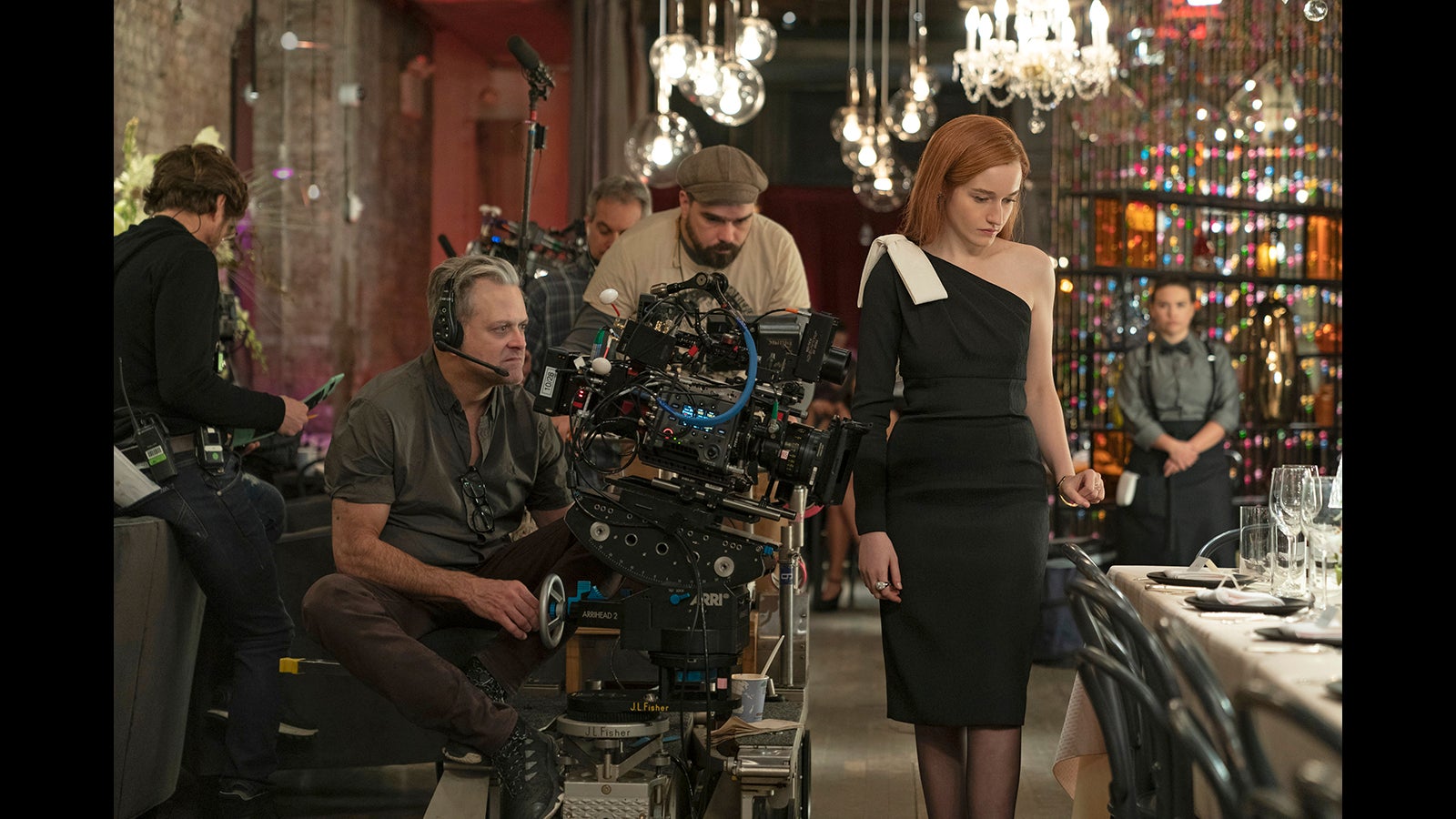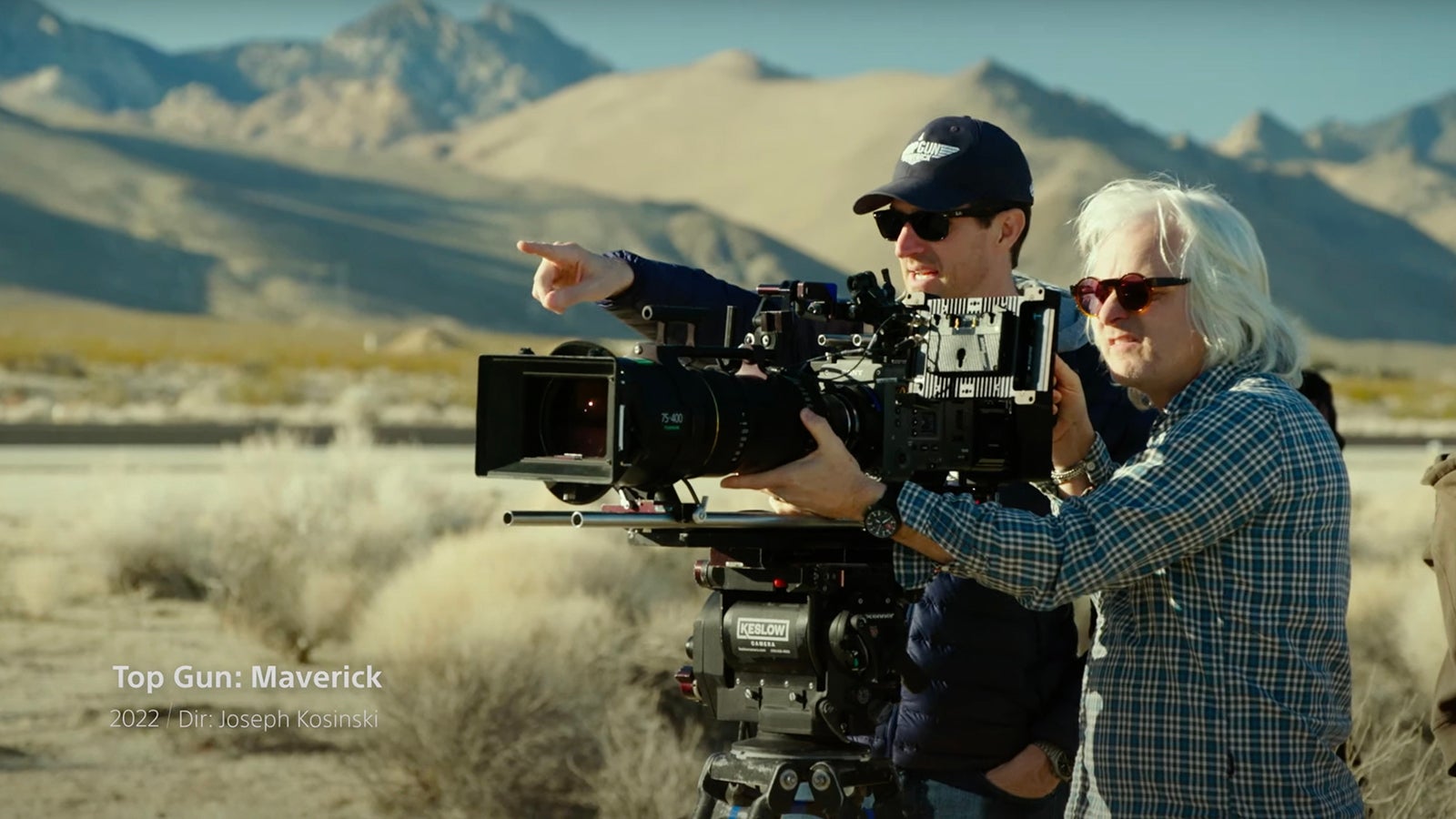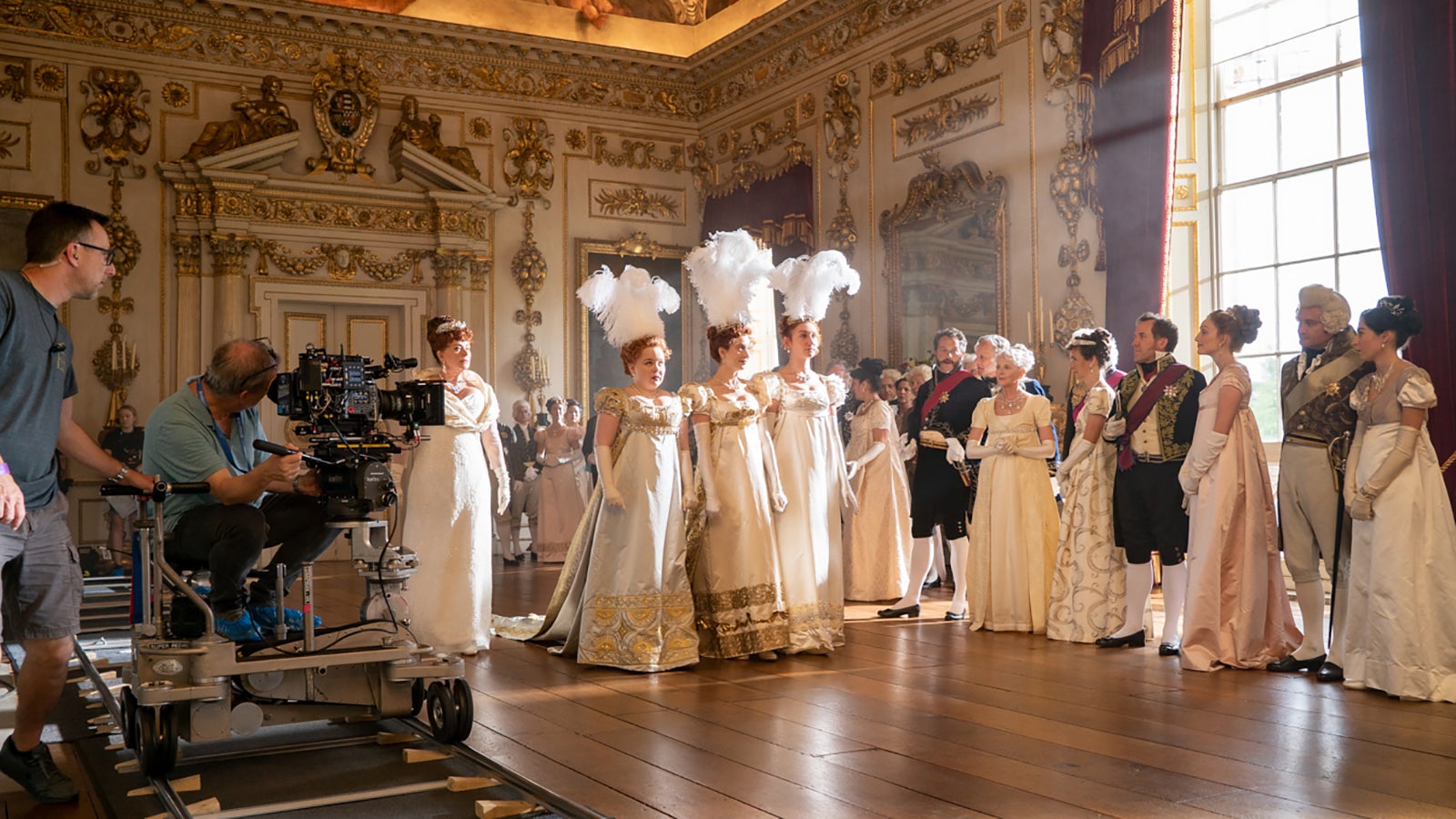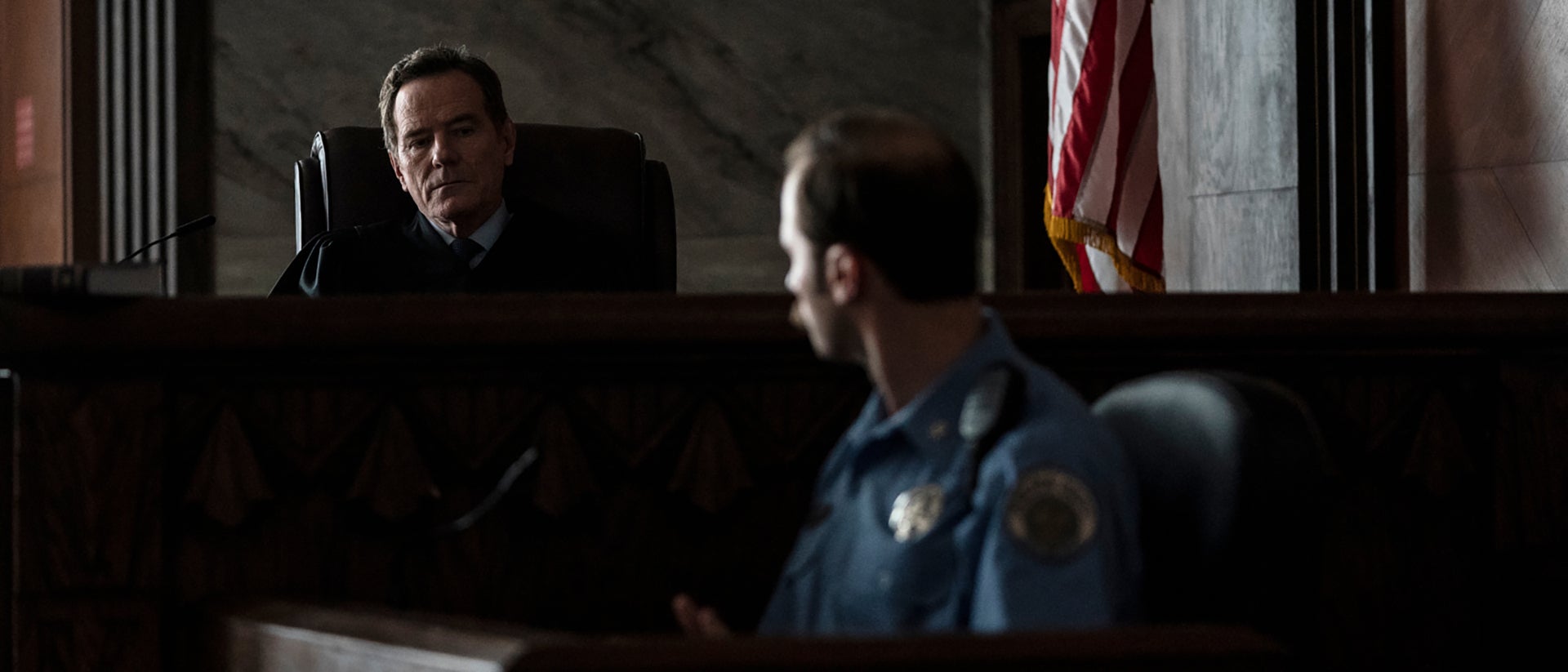
02-19-2021 - Case Study, Gear, Technology
James Friend, ASC, BSC Lights the Shadow of Doubt in “Your Honor”
By: Suzanne Lezotte
Based on an ethical question posed by producer Liz Glotzer, “what would you do?” in a hit and run case, “Your Honor” writer Peter Moffat was intrigued by the premise. Tasked with writing a show adapted from an Israeli television series named “Kvodo,” the plot is further complicated by the knowledge that the person killed was the son of a big mafia family. Starring Bryan Cranston as Judge Michael Desiato, Showtime’s new drama is set in New Orleans and carefully unfolds, twists and turns along the way.
Cinematographer James Friend, ASC, BSC who worked with director Edward Berger on the show “Patrick Melrose,” (for which he won the 2019 CamerImage First Look Award, was nominated for a BAFTA, and won the BSC and ASC Awards), read the script for “Your Honor” and loved the material. [They are currently collaborating on “All Quiet on the Western Front” in Prague.]
Photo above: (L-R): Bryan Cranston as Michael Desiato and xx in YOUR HONOR, "Part One". Photo Credit: Skip Bolen/SHOWTIME.
“I had never visited New Orleans, and I wanted to go in relatively uninhibited, a bit like a sponge,” he explained. Upon landing in the city, the first thing he did was drive around. “At night, New Orleans is an insane place, everything glows and nothing is uniform.” To him, there was a real vibrancy and sense of culture, “which is pretty extraordinary, from an outsider’s point of view,” he laughed. “The director and I realized pretty quickly we didn’t want the film to feel to like a staged look, we wanted it based in reality. I am a big fan of naturalistic lighting, a sort of enhanced naturalism.”
Because the show is based on a real-life dilemma, and a father/son relationship, Friend explained, “If it felt too engineered, it wouldn’t work. The initial look came from traveling around New Orleans during the day and at night, and appreciating that contrast, the two different sides of the coin.” Filming in areas like the 9th Ward, “the poverty evokes a sense of sadness, which we wanted to document with the photography. The other thing that is quite shocking is the humidity and the heat, and we wanted to capture that,” he said.
Friend settled on the Sony VENICE for capture, after using it on the Netflix show “Cursed,” which was a polar opposite production, but he loved the large form sensor. “It impressed me so much I had to revisit using the camera. I also thought it would be interesting to use it on a contemporary drama with a naturalist aesthetic,” he explained.
As for skin tones, Friend admits the way a camera renders skin tones is one of the things he worries about. But with the VENICE, “I never had any doubts. The VENICE rendered images beautifully; it feels more film-like than digital.” Noting that Bryan Cranston “has a beautiful face, full of character, the untreated image that came out of the camera was such a good starting point.”
In preproduction, Panavision New Orleans supplied a number of cameras and lenses for testing. “The VENICE came out on top, because it was creatively driven,” he explained. “I wanted to capture New Orleans at night, and the vibrancy of the lights. One thing we can get with VENICE was the atmosphere -- the pollution – which was an amazing kind of glow and the camera could see far more information than my eye could register, especially with night exteriors,” he explained. After extensive lens testing, Friend decided on shooting spherically, “Because I wanted a reasonable stop. I really wanted to work in extreme low light, and in this case, spherical was the right choice. We wanted to approach it from a film perspective. We used two different types of lenses, Primo Panavision 70, slightly detuned, with a bit of aberration, and also the Sphero 65.”
For workflow, the show LUT was designed by DIT Robert Barr, to use as their base, “and we tweaked that as we went along,” Friend explained. “Robert very elegantly and quite subtly built on that for every scene. We gave the daytime exteriors more punch; that’s what the Livegrade is really good for,” he commented.
In the first scene, the judge goes for an early morning run through the streets, visiting several locations. Friend had to determine a matching look for the visuals to set up his character, and give the sense of routine and order. “We wanted to shoot at magic hour, so we shot it over a series of mornings in the garden district, off a Russian arm. To show it was early morning, we took a bit of color out of it, which gave it a blue wash. There is a passage of time, and when he goes up the stoop steps to Kofi’s house, we needed the sun to be slightly higher, a parallel to the same time his son wakes up.” He explained that most of the look was achieved in camera, but the challenge lay in “finding the balance, as one part is shot on a stage and one part is an exterior.”

Bryan Cranston as Michael Desiato as in YOUR HONOR, "Part One". Photo Credit: Skip Bolen/SHOWTIME.
A key setting is the courtroom, and after scouting locations, specifically the courtroom used in “JFK,” “that was our starting point. Myself, the director and the production designer, Scott Murphy, were desperate to shoot there.” Because they were only allowed to utilize that location on certain days, the overriding decision was to build a carbon copy of the courtroom. “We added a balcony as a new dynamic, so we could get high and low and change perspective for the character,” he added. Because the team wanted an opportunity to utilize the space, they put windows on both sides, “so if we did have to film on the other side we had the opportunity. I could key through one window, if the time of day changed. I basically put a SkyPanel LED outside through silks, and we lit the courtroom almost exclusively with LEDs, 360 SkyPanels, and supplemented with HMI when we needed to. We didn’t want it to get too hot or uncomfortable, so we shot everything in the courtroom at 2500 ASA, which allowed us to work comfortably,” he explained.
Given the premise of the story, the police precinct figures prominently as a location in the first few episodes. Initially, the scouting team was unable to find something suitable until they saw City Hall, which is a building made mostly of glass windows. Originally told they couldn’t shoot there, the location department fought to use it, “and a big thank you to the city of New Orleans for making it happen,” commented Friend. “We wanted a stark, authoritarian place, almost as if you couldn’t hide from the truth,” he said. “I decided to light it all with practicals, and traditionally that’s not very flattering. We had a full ceiling, and we used 30-40 TekTite lights that we set in the ceilings. We could change the light and the intensity. I lit the whole thing with the lights in shot and then if I wanted something for the eyes, I took one out and used it to give a little more light in Brian’s eyes,” he explained. Friend wanted to show a low-contrast cool feel, with respect to other places in New Orleans that were warmer at night. For some night scenes, there were streetlights that the production team couldn’t turn off, so they built walls on scissor lifts to hide the light, “because the camera could pick everything up. It changes the way you light night exteriors. I had to evaluate what is there, and then I could embrace locations and build upon them.”
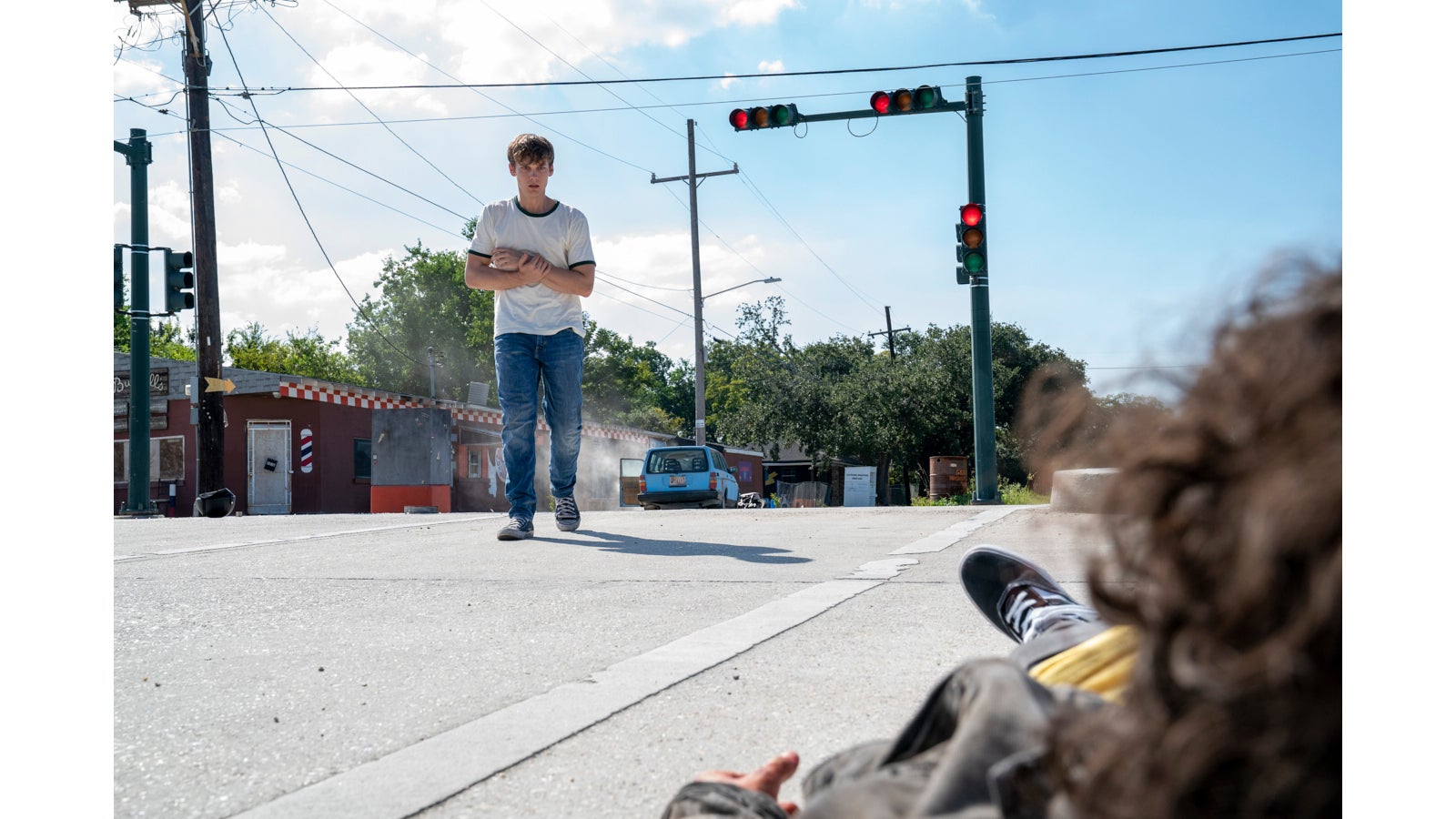
Hunter Doohan as Adam Desiato in YOUR HONOR, "Part One". Photo Credit: Skip Bolen/SHOWTIME.
In the first episode, a hit-and-run takes place, which was difficult to shoot with the sun and the change of direction during the scene. Friend found the built-in NDs on the VENICE “a master stroke from Sony. If the sun was in or out, we could change the ND, even though we couldn’t use those exact seconds. It enabled me to change it without anyone realizing it but myself, and we didn’t have to interrupt the actor, and the scene.”
Another scene where Friend really pushed the limit of the VENICE was when the judge is cleaning out his car that was involved in the accident, under cover of night. It is almost pitch black except for a flashlight. “For that scene, we wanted to feel we were in Bryan’s space,” he explained. “The whole time, I was thinking, how am I going to light this?” Friend put one cherry picker on the street, and a porch light was turned on. “I wasn’t able to hide anything because of the large format sensor,” he explained. “The whole scene was basically lit by a flashlight, and a garbage bag that he carries is white, so it helped illuminate his face. It added to the frenetic pace of what his character was going through. That scene did cause me a few sleepless nights,” he admitted. “I was really worried. But when we looked at the log, it allowed us to work at a decent stop of 2.8, and enabled us to put more contrast in the grade. My focus puller, Serguis Naffa, who came highly recommended, is unbelievable. He was a complete ninja on the focus.”
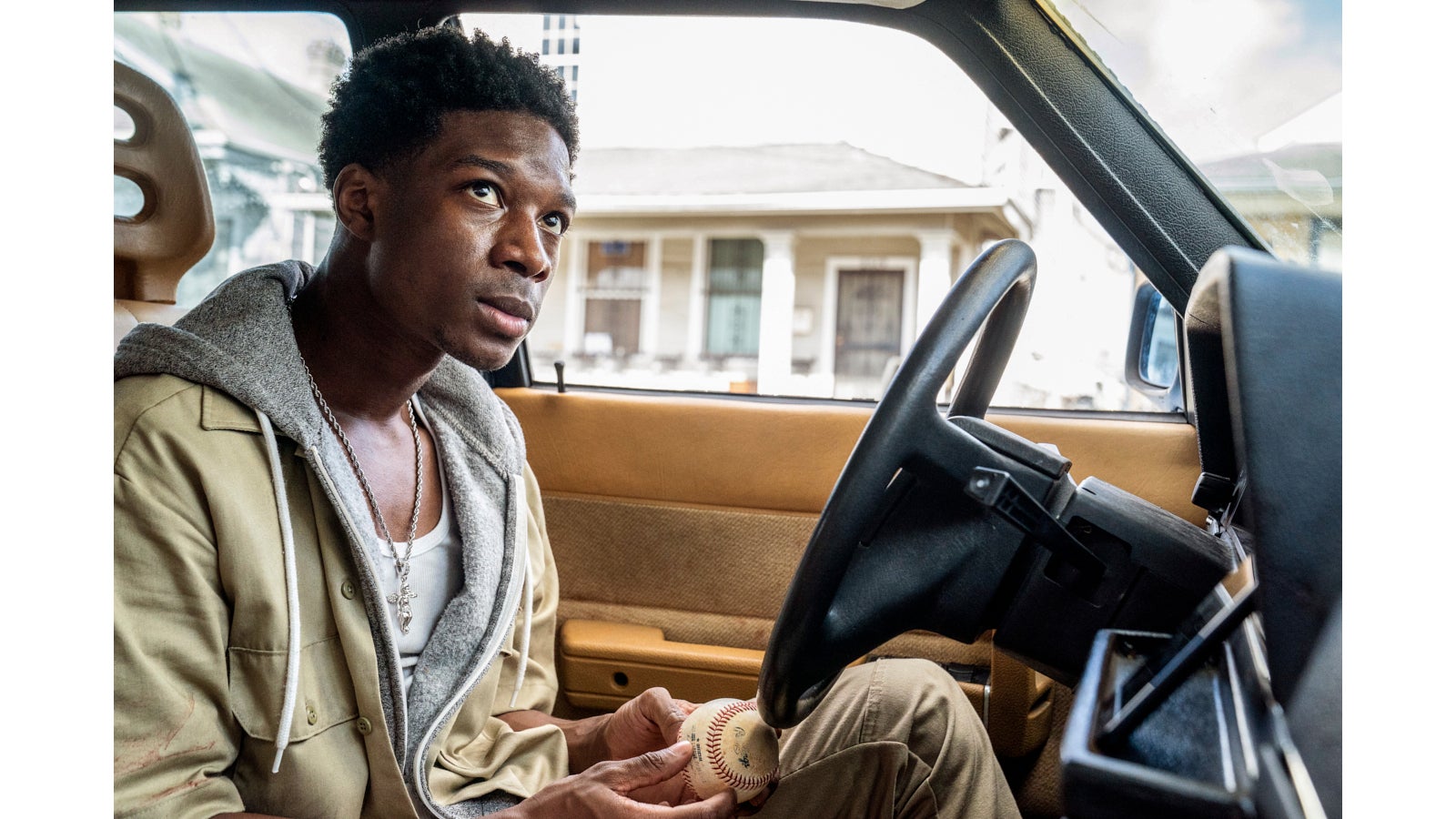
Lamar Johnson as Kofi Jones in YOUR HONOR, "Part Two". Photo Credit: Skip Bolen/SHOWTIME.
Friend noted that one of his favorite things about VENICE is the VENICE Extension System, “because you can get the camera in places you traditionally can’t without removing a wall or augmenting a set.” For this scene, it enabled the camera to follow Bryan as he cleaned the car. “Normally, you have to rip seats out for the camera. It gave me more freedom than I ever had before.”
In the most pivotal scene of the show, when the accident happens, Friend was challenged with how to show the scene from the perspective of Adam, the judge’s son. “The least controllable, but the best way of doing it was using a pod car that our special effects team engineered. That’s where the VENICE Extension System really came into it’s own. We got angles in the car which were simply impossible to get.” Using the VENICE Extension System allowed the crew to run three cameras in proximity to him, “which you would normally never be able to do. It really was a game changer. With the VENICE Extension System, you could get a camera in the dashboard, in the footwell and on the roof, without a process trailer. We tore the roof off for one shot for a high angle and we shot that on the stage.” Friend said every camera had a VENICE Extension System with it, which enabled his Steadicam operator, Daniel Bishop, to carry the camera and lens, noting, “the complete redistribution of weight really helped him.”
The toughest location for Friend was the prison. After scouting many working prisons, the team decided on the now-defunct OPP in the heart of New Orleans. “It was a filmmaker’s dream. The place reeked of story and real life scenarios,” he said. But, there was no power in the place, and given that the windows were so tiny, you couldn’t tell if it was day or night.
“We took Titan tubes, built a box around them and put them outside, so we could change the color with sodium vapor. We had nowhere to rig, so I put a 12x12 LED cloth to give us some ambience in there. I was relieved that it looked good, but it was quite challenging. My gaffer, Kevin Gazdik, and my key grip, Chris Moten, were amazing. They were real team players, and supported me the whole way. I couldn’t have asked for a better team. My operator, Danny, was the only crew I could bring on board, so I was working with a whole new team, and I can’t wait to work with them again, they were magnificent.”

(L-R): Hope Davis as Gina Baxter and Michael Stuhlbarg as Jimmy Baxter in YOUR HONOR, "Part Two". Photo Credit: Skip Bolen/SHOWTIME.
Fotokem did the dailies processing, and Doug Delaney of Technicolor Los Angeles, was the colorist. “He’s like a magician,” said Friend. During the first lockdown, while Friend was shooting another show, the tech department put a monitor in his home office, so he could remote grade in LA. “He was brilliant. He took all my reference stills (about 200) that I gave him in prep. He percolated on that for about six months and I joined him on the first day of the grade. He took what I had done and made it look better.” Friend felt the remote grading process was pretty seamless, despite being skeptical at first. “Doug really understood what I wanted and, more importantly, he brought his own flavor to it. A DP doesn’t own the image, it belongs to all the filmmakers, and a colorist is such an important part of the process. When I was worried, I asked him to show me the log. I had a few Gordon Willis moments, when I thought I pushed it too far. The log image was just unreal. You could see detail that you could never get on film.”
Friend added that despite approaching every project with a fresh slate, “I can’t imagine shooting without the large format sensor, and the one on the Sony VENICE is magnificent. I equate it to how the human eye sees. If you are trying to tell a story from a human’s perspective, you really feel like you are experiencing the scene with them. The combination with the lenses, it’s brilliant. It’s a pillar of the photography.”
Friend shot the first block of the show, and was intending to come back after the alternating DP, John Lindley, ASC shot the second block, but Covid prevented his return to the States. Being able to collaborate with Lindley, “was wonderful,” said Friend.
